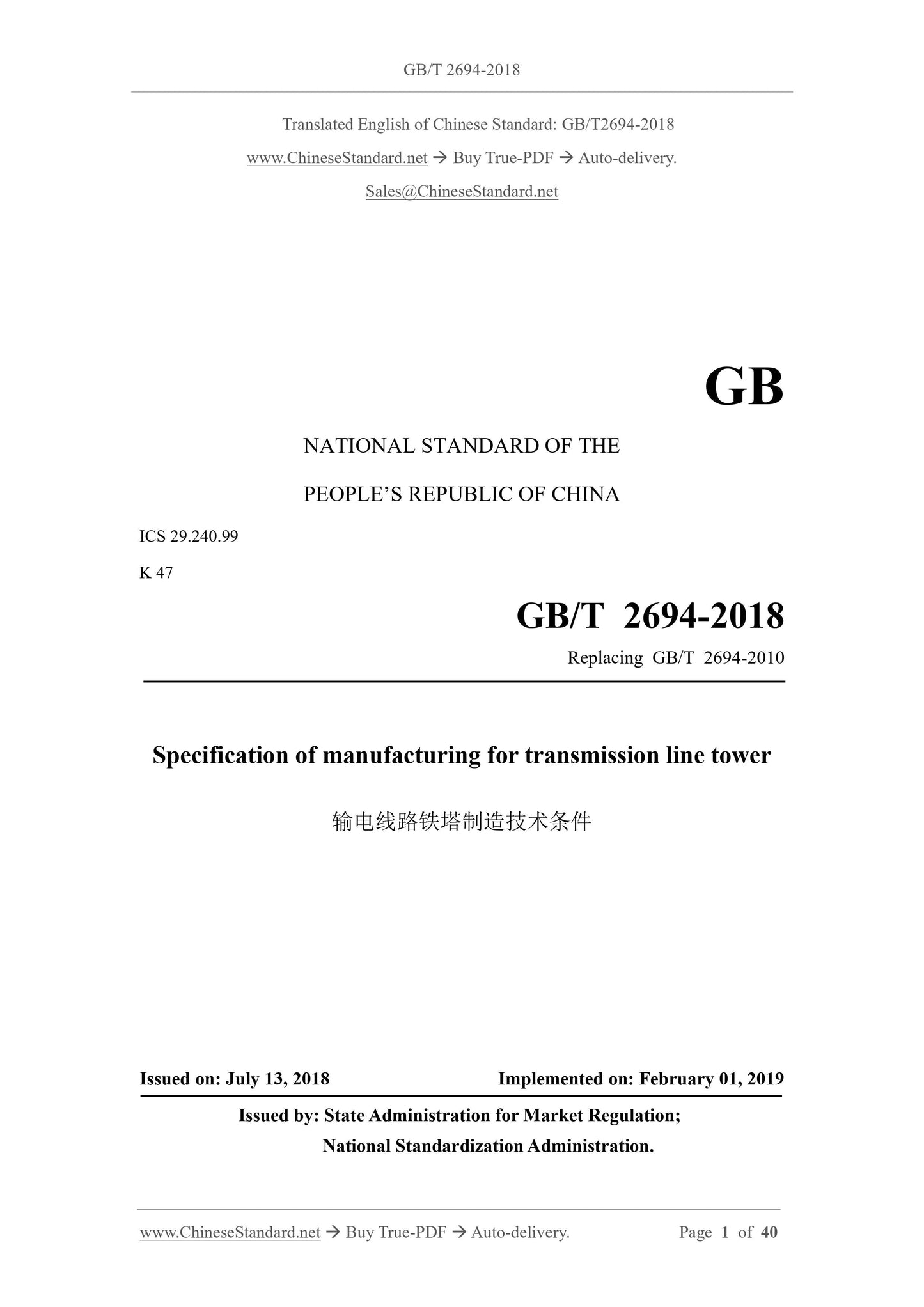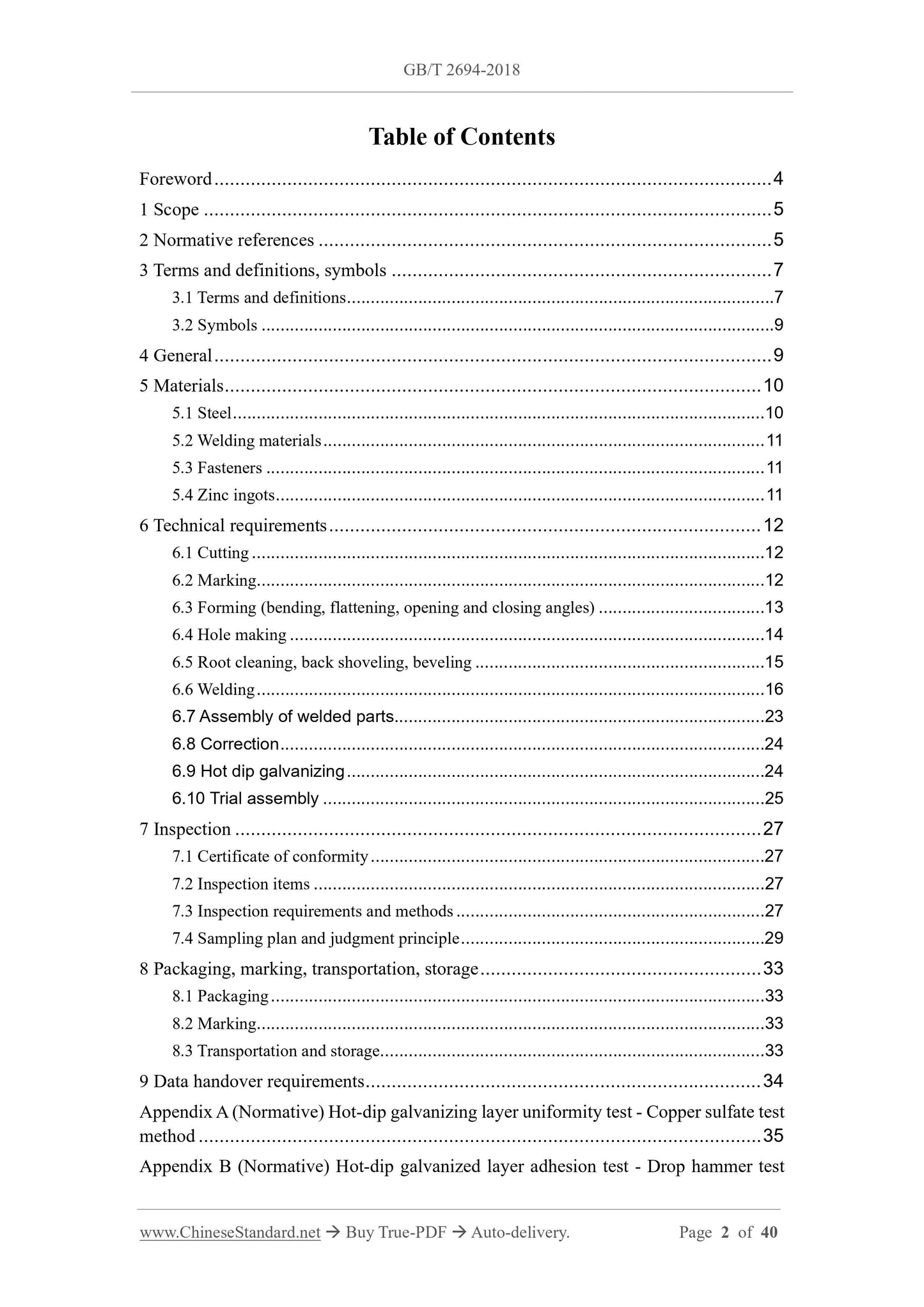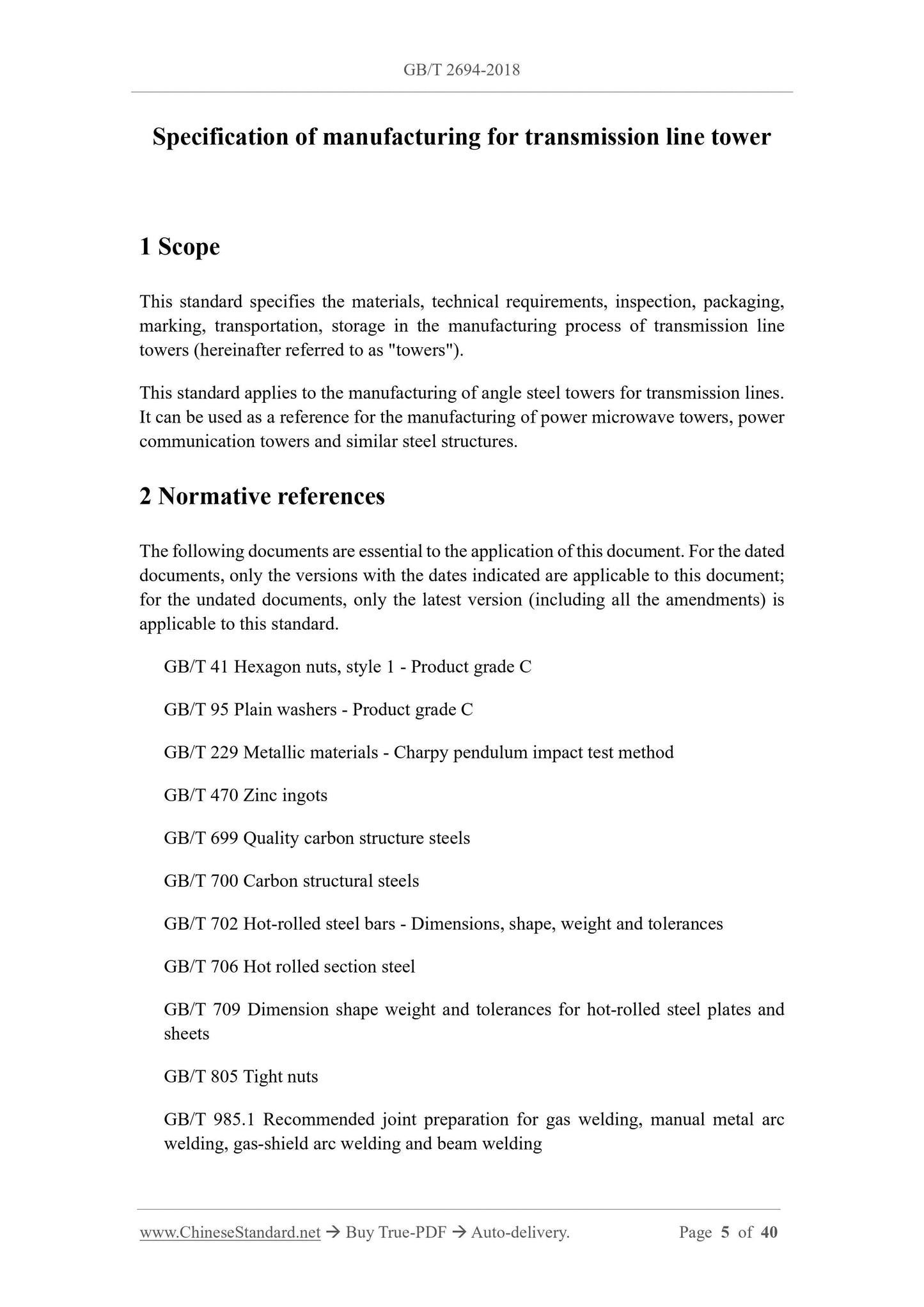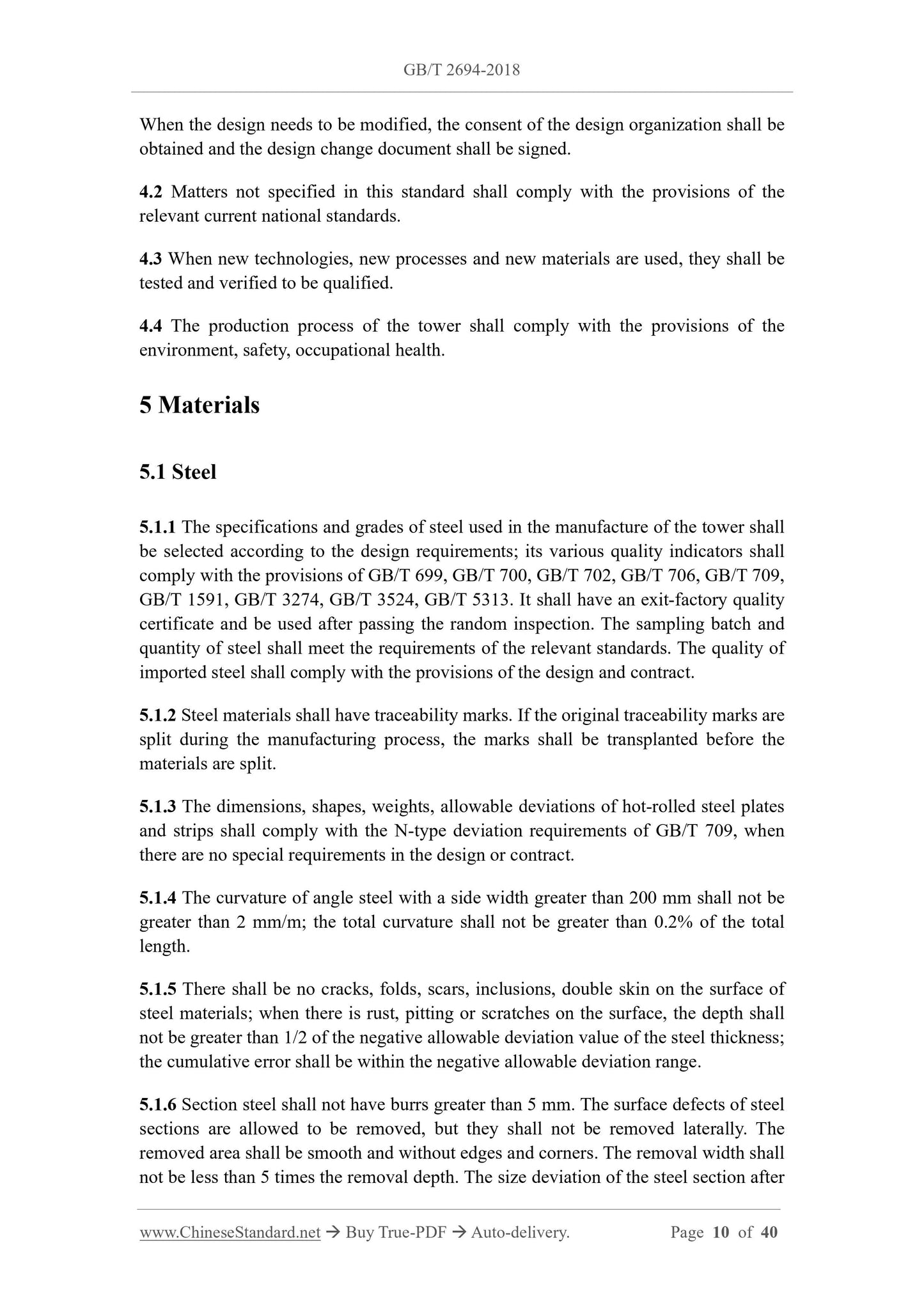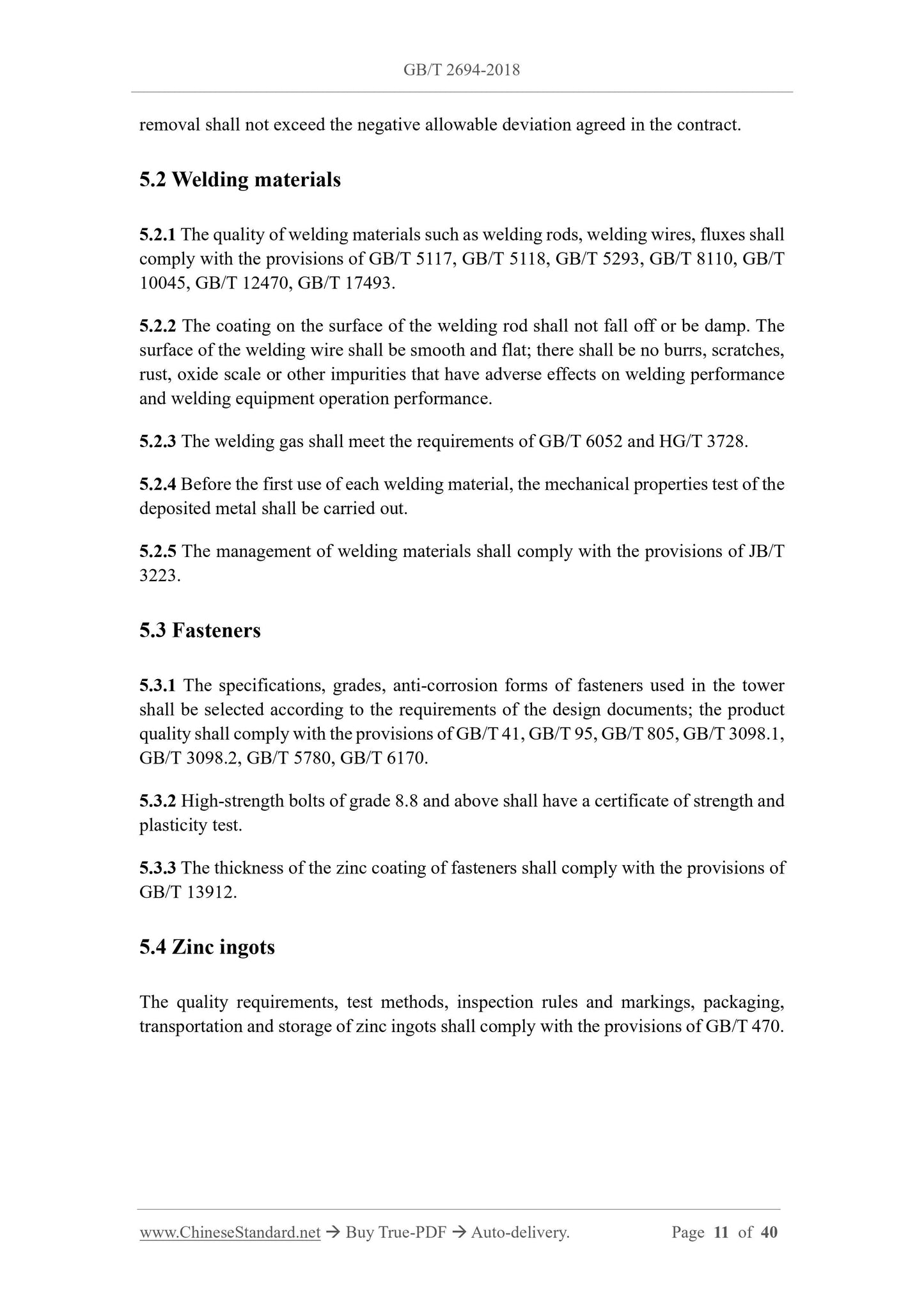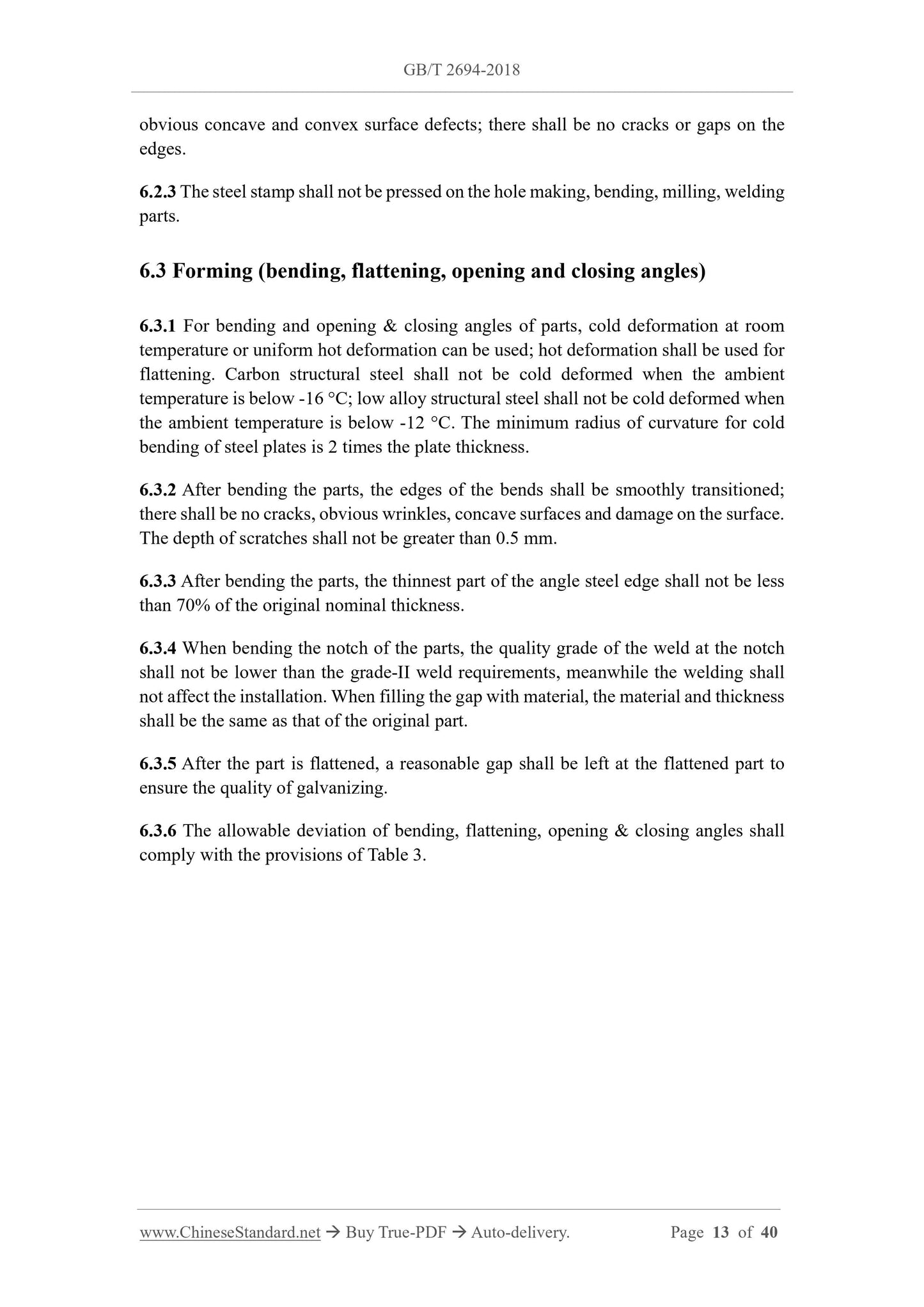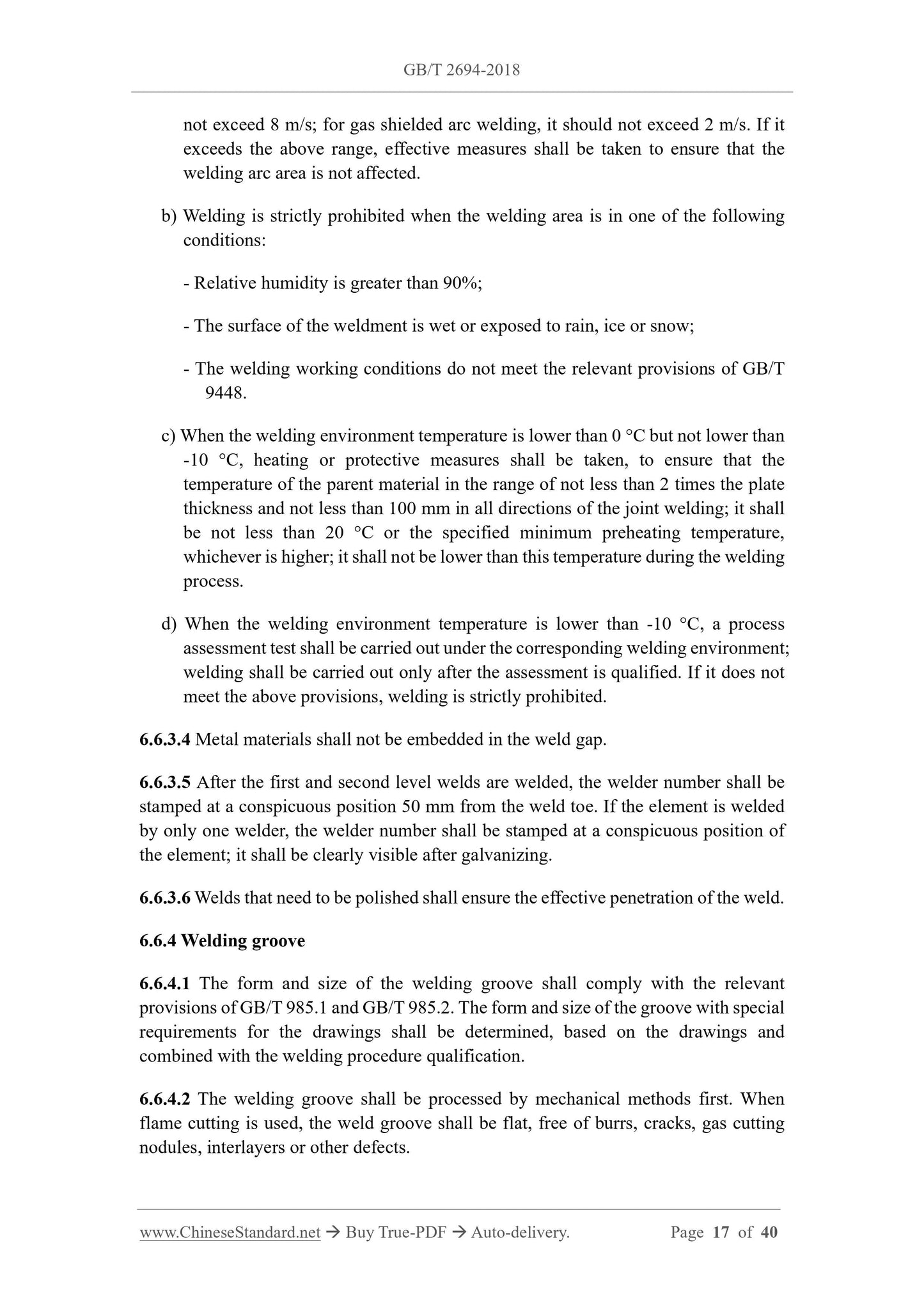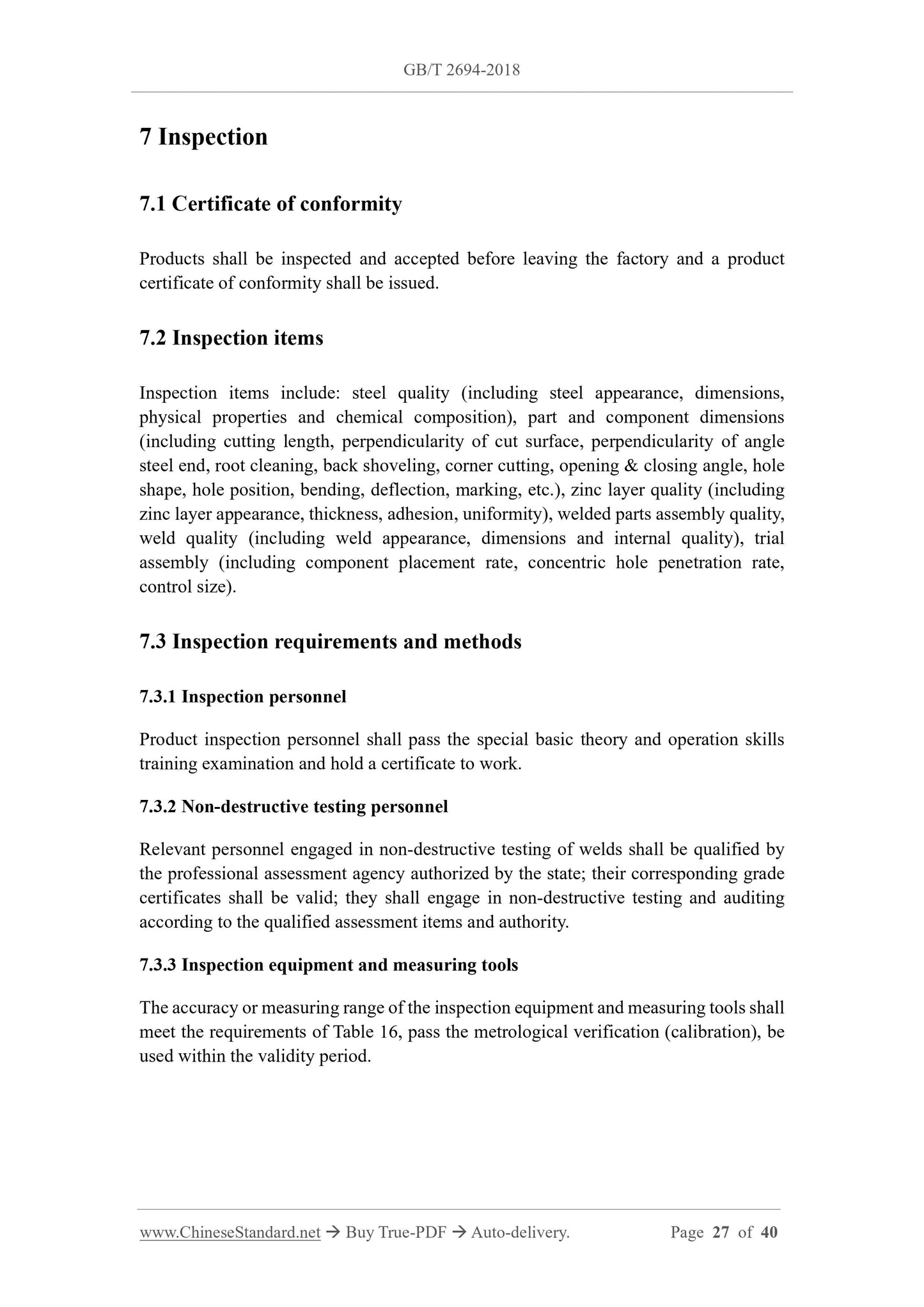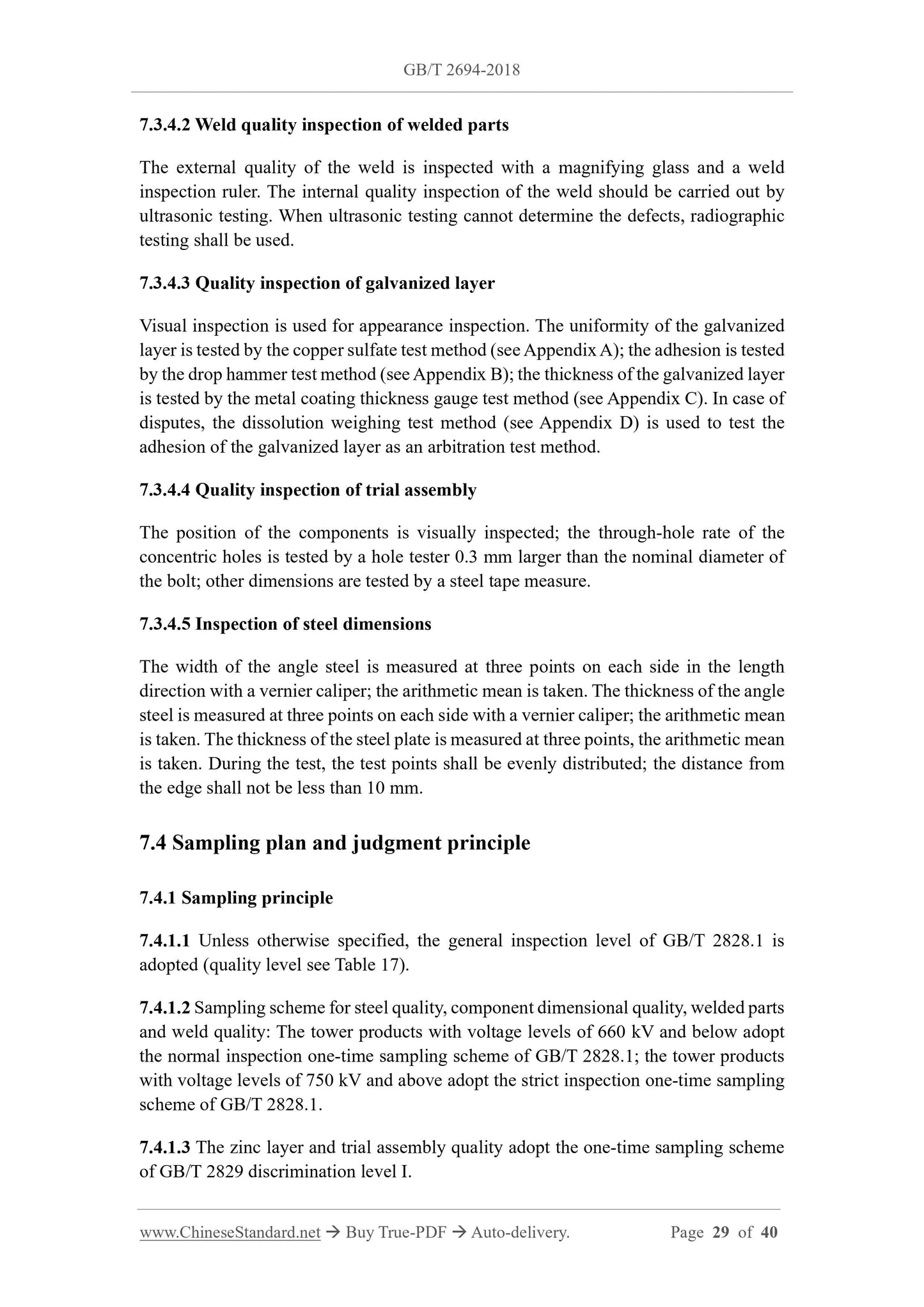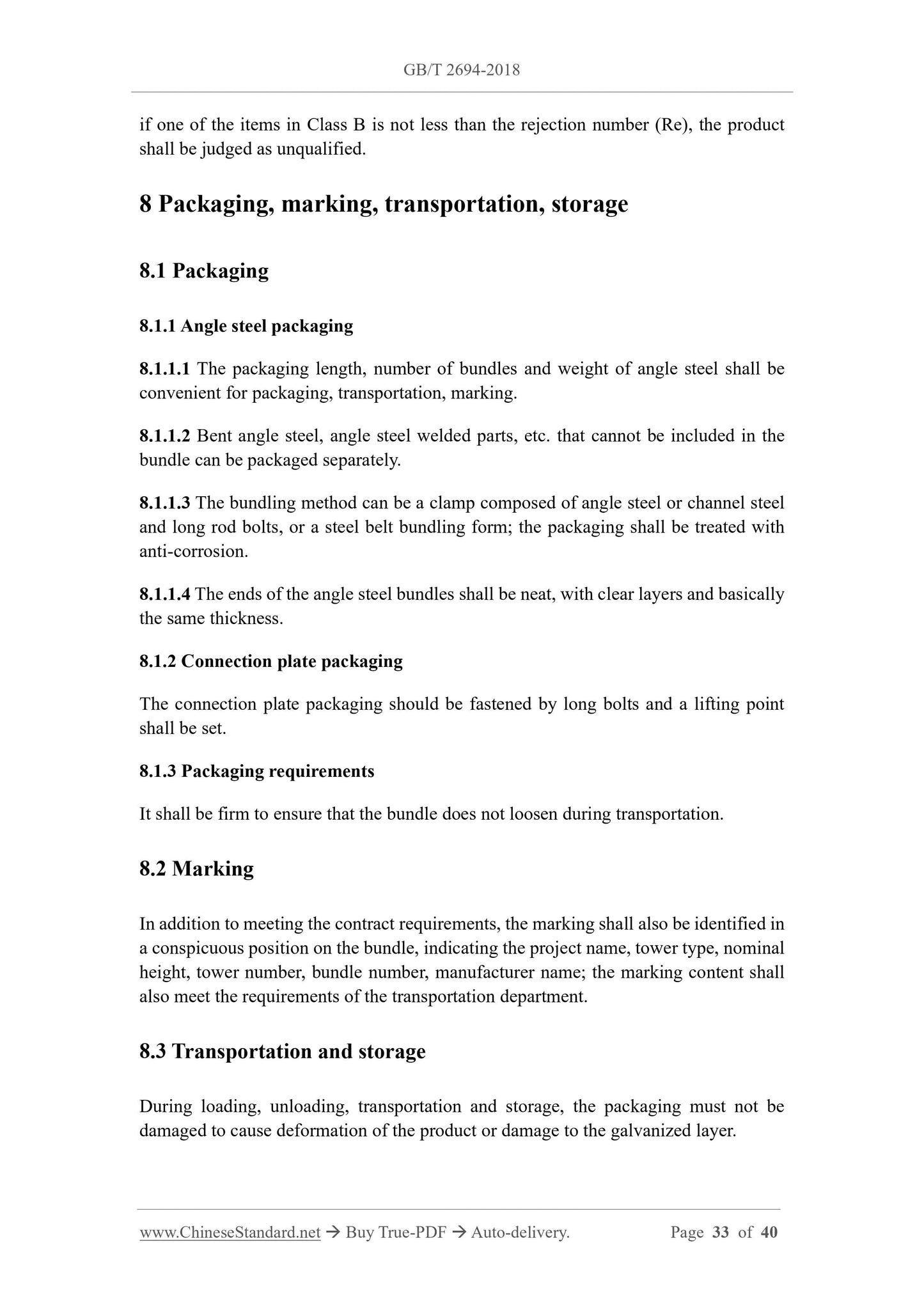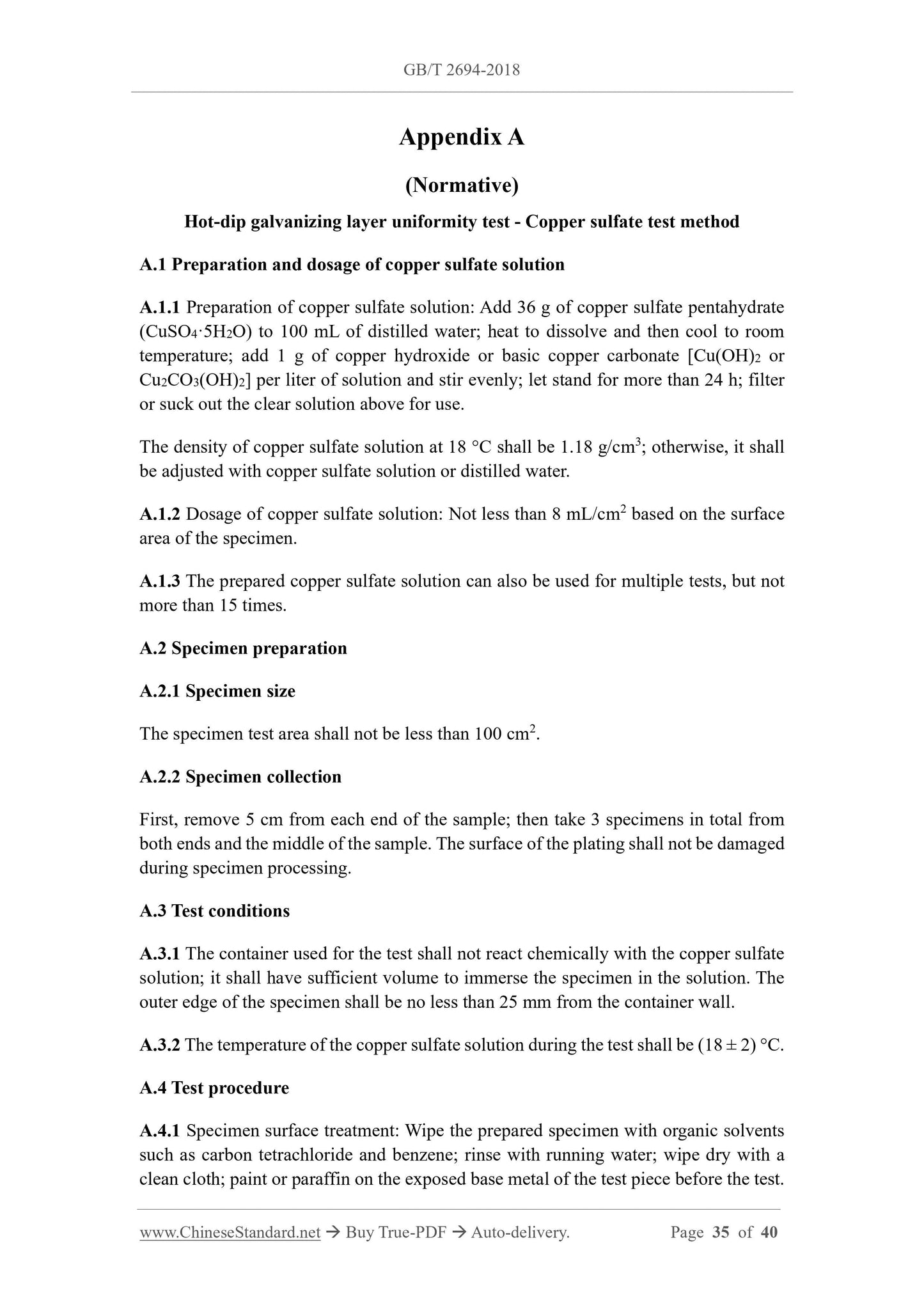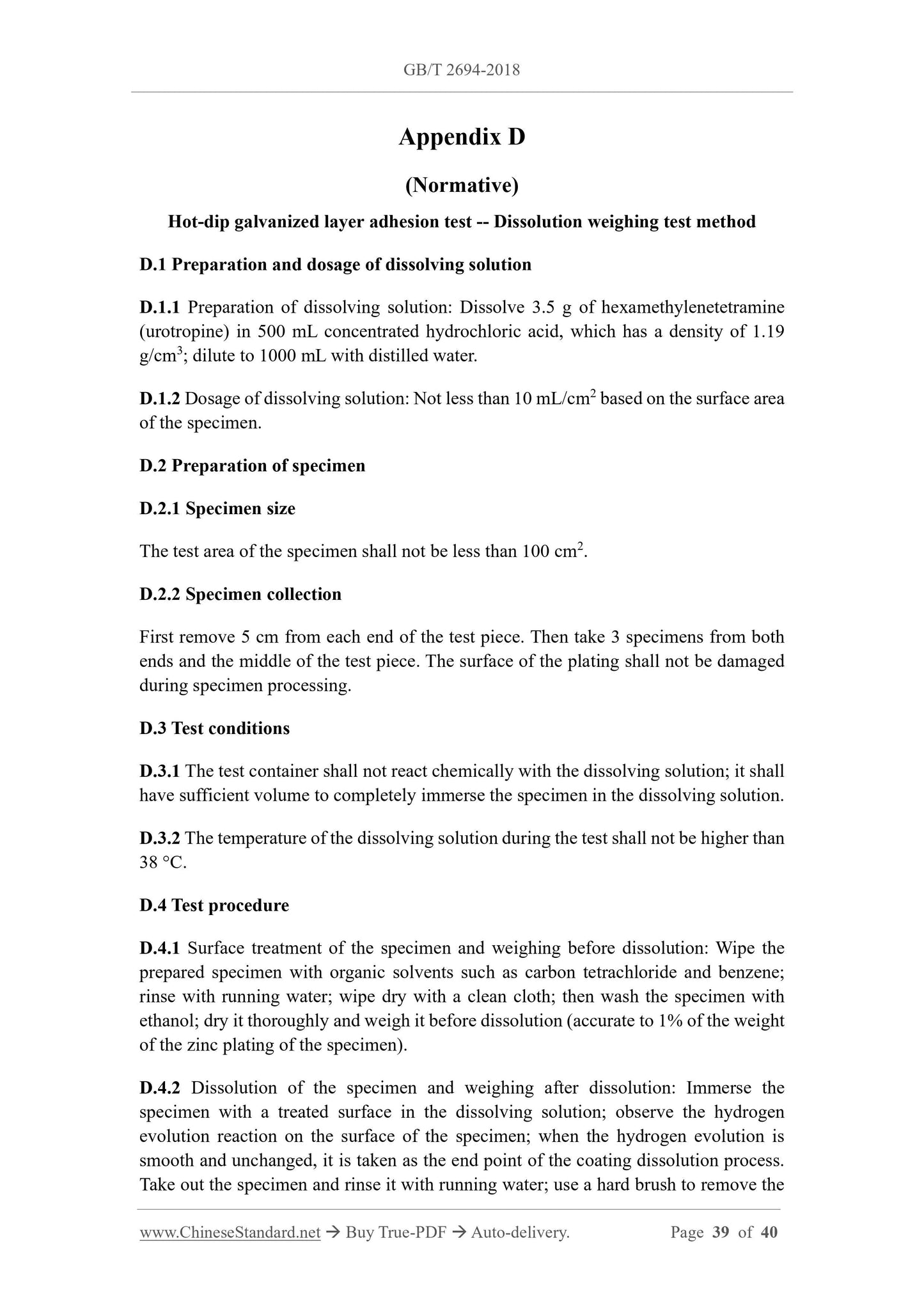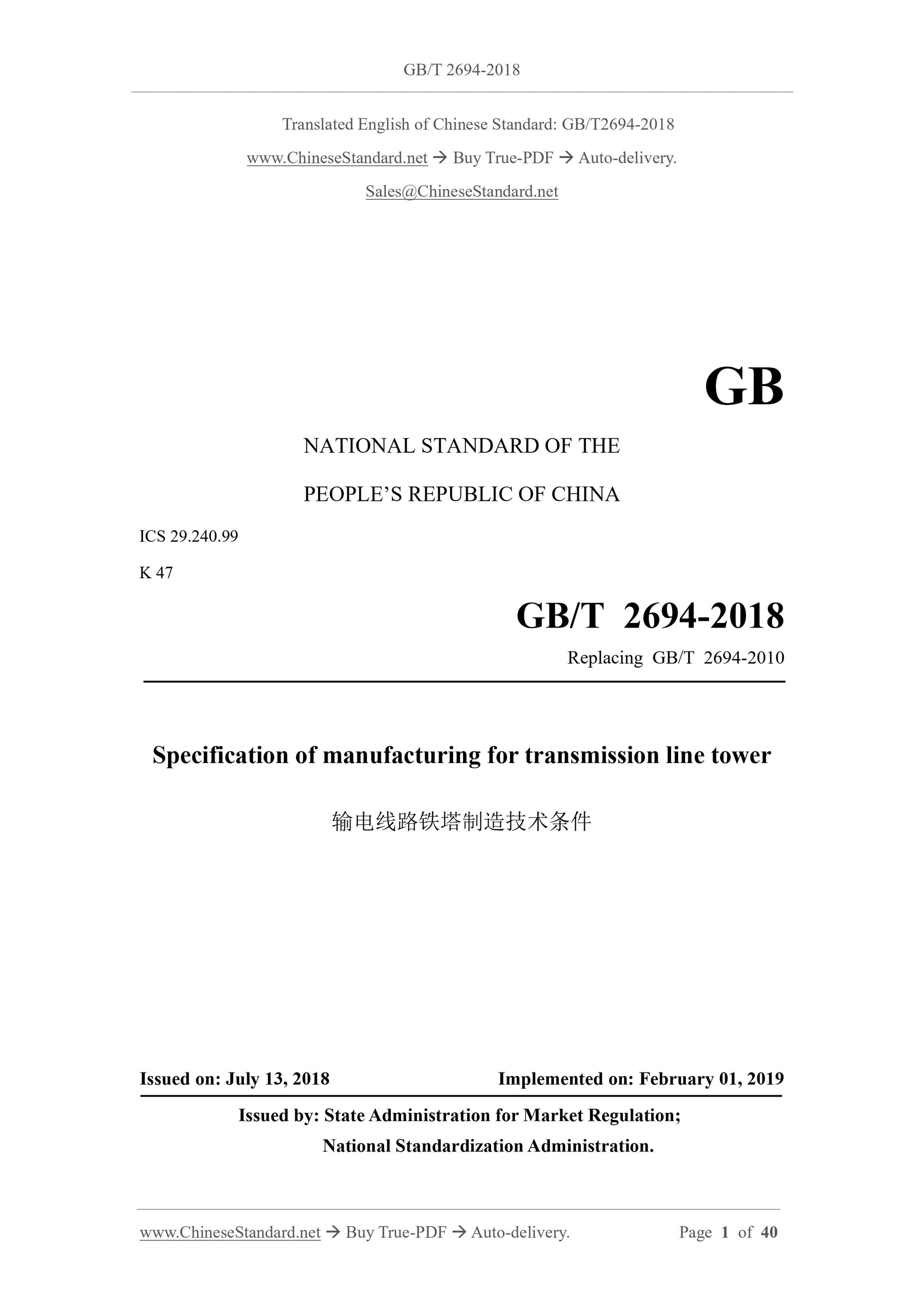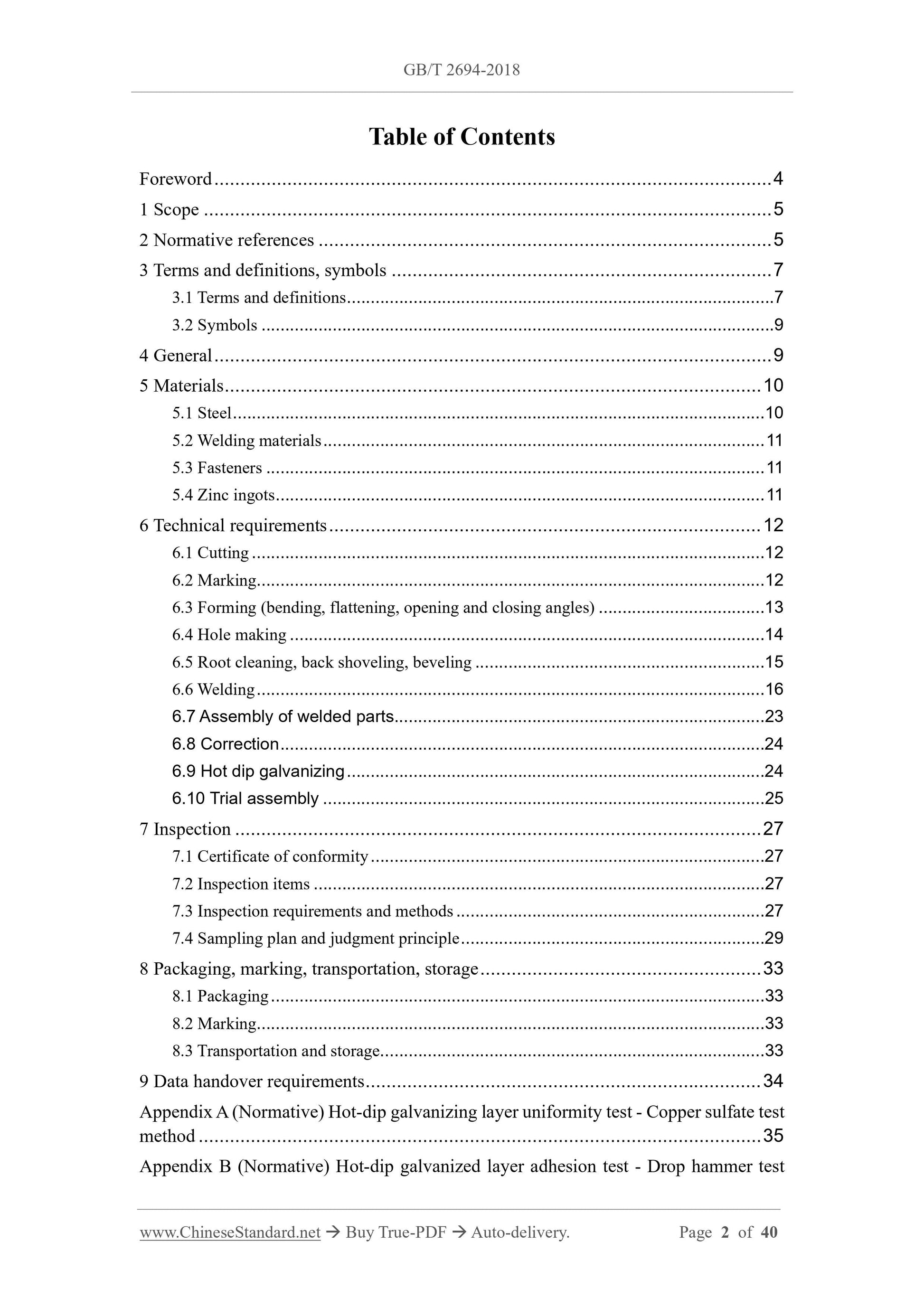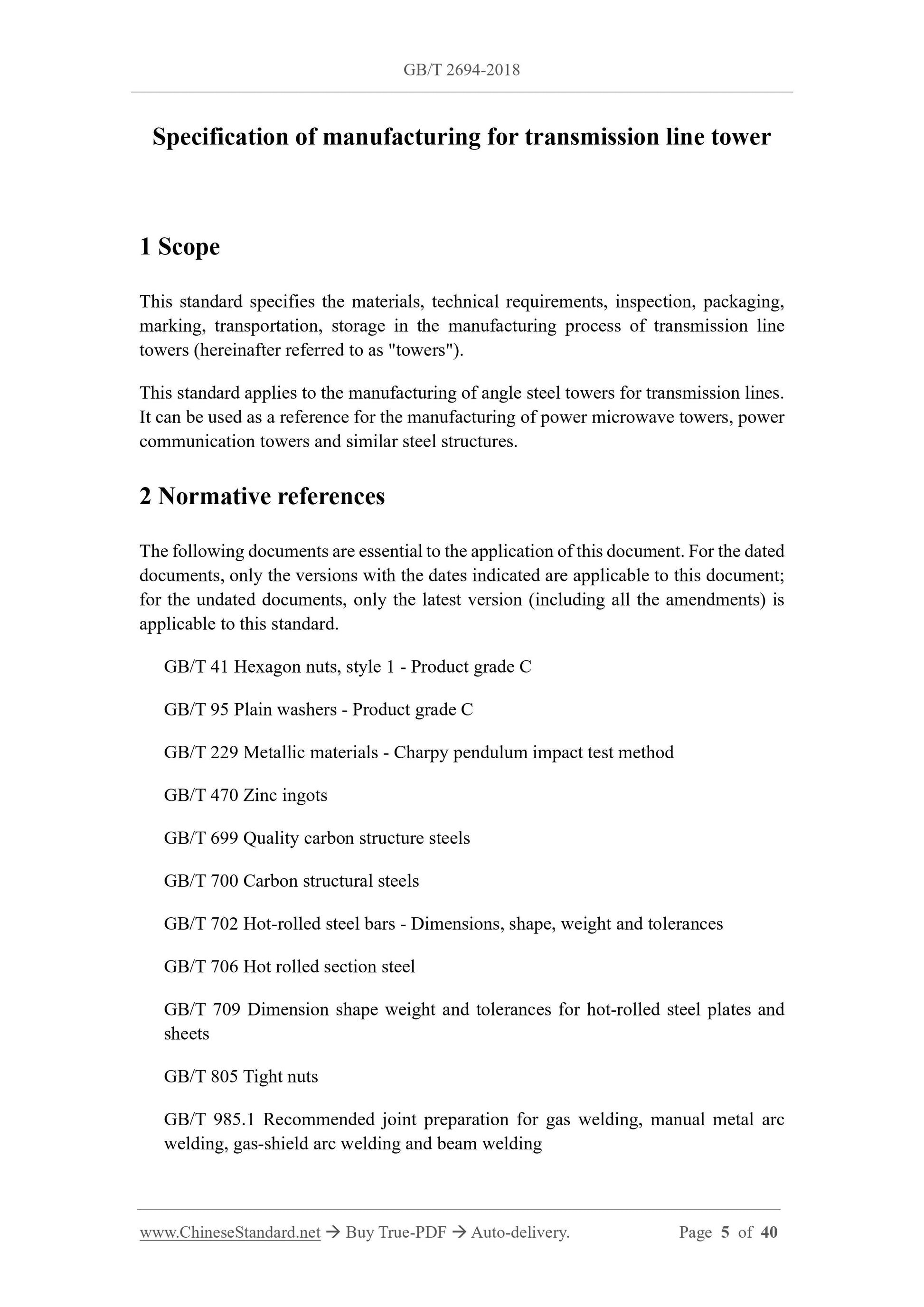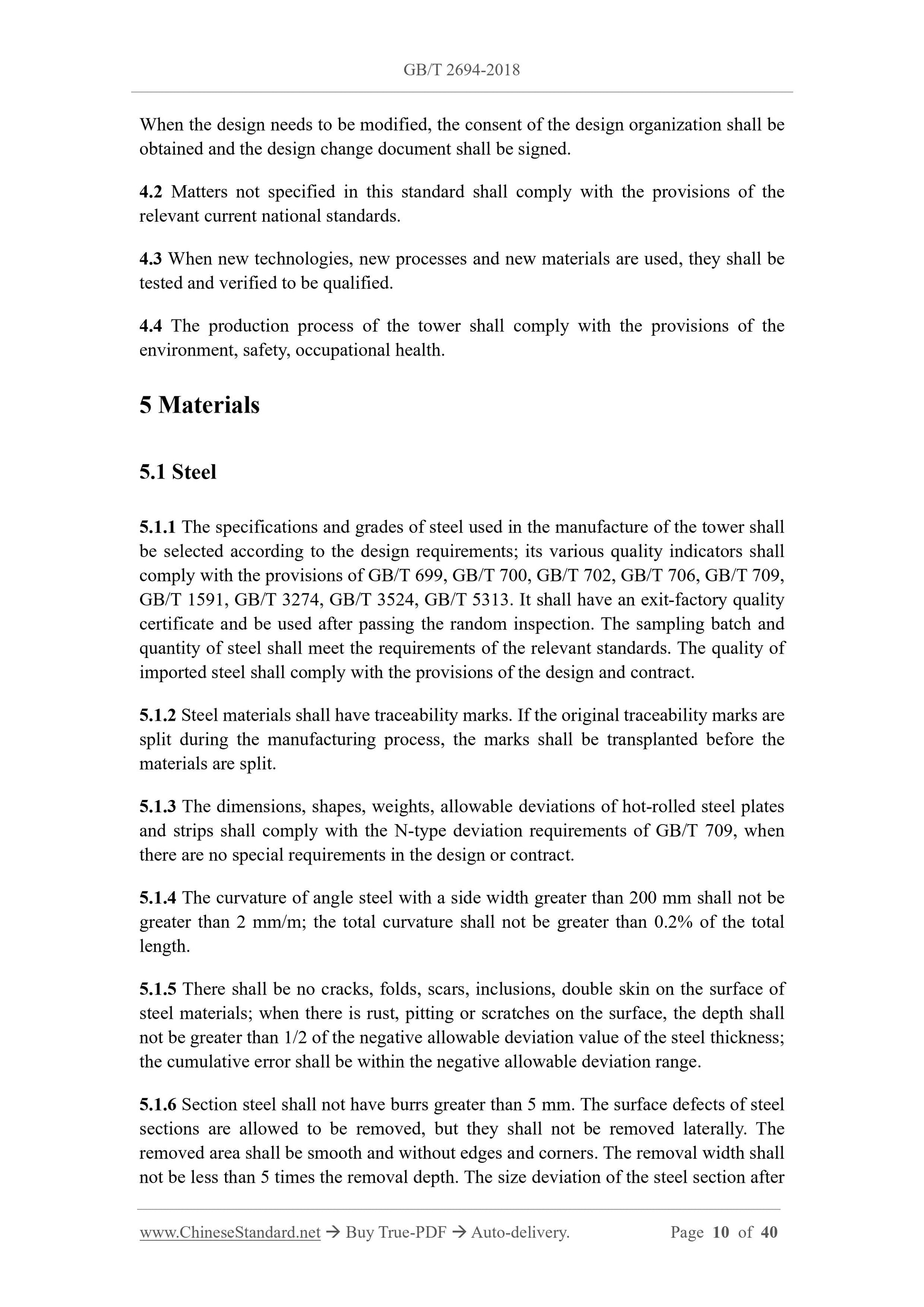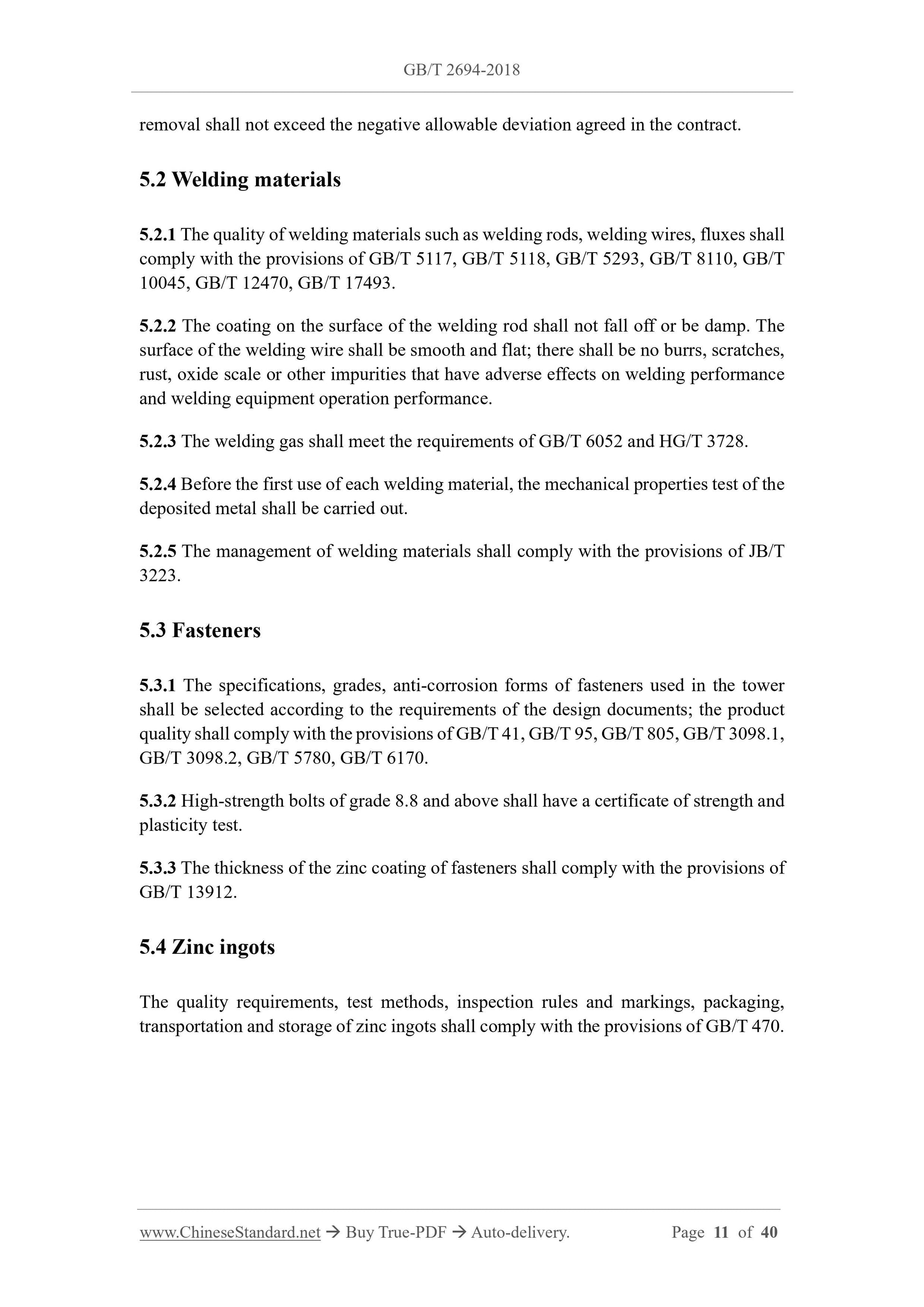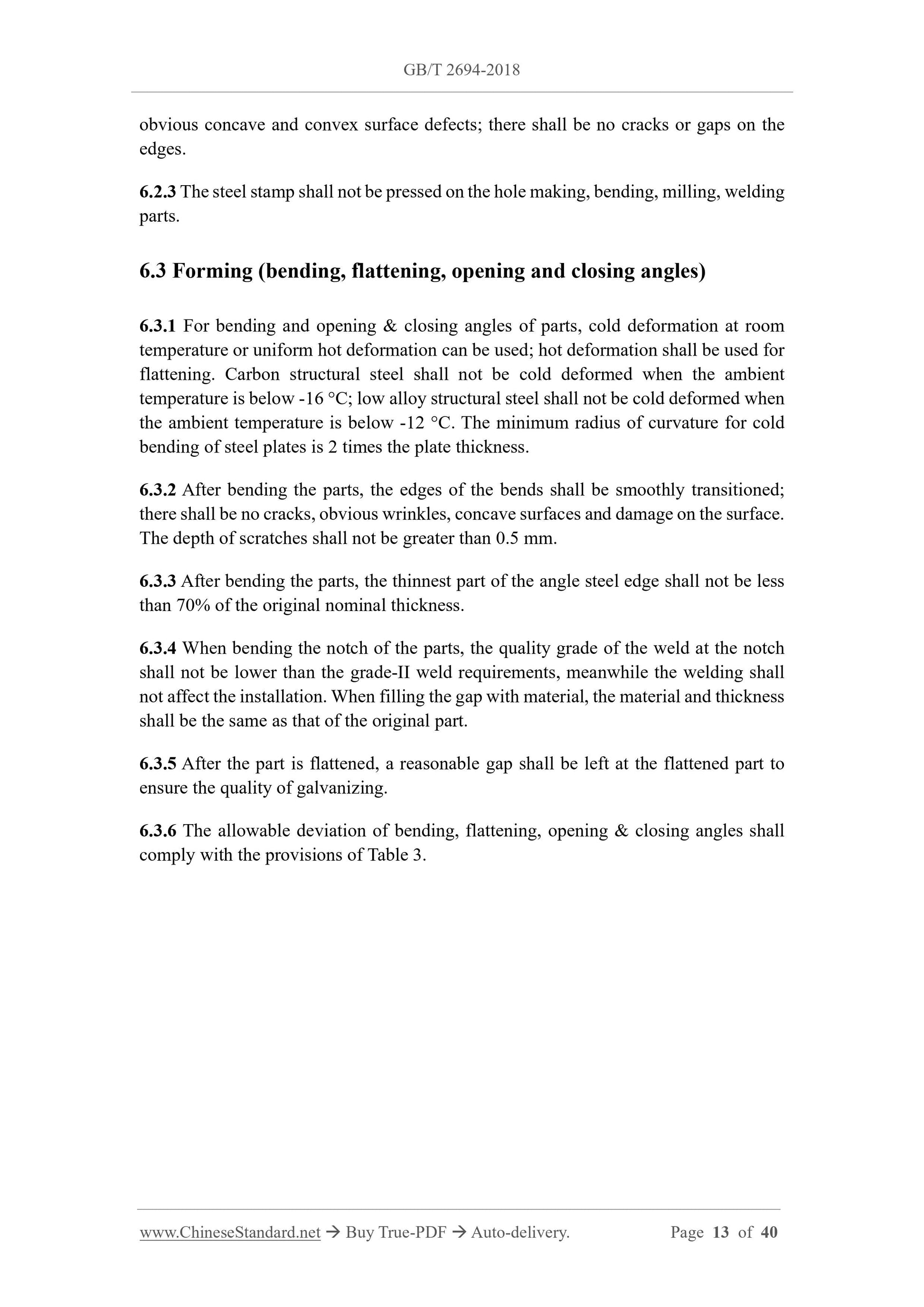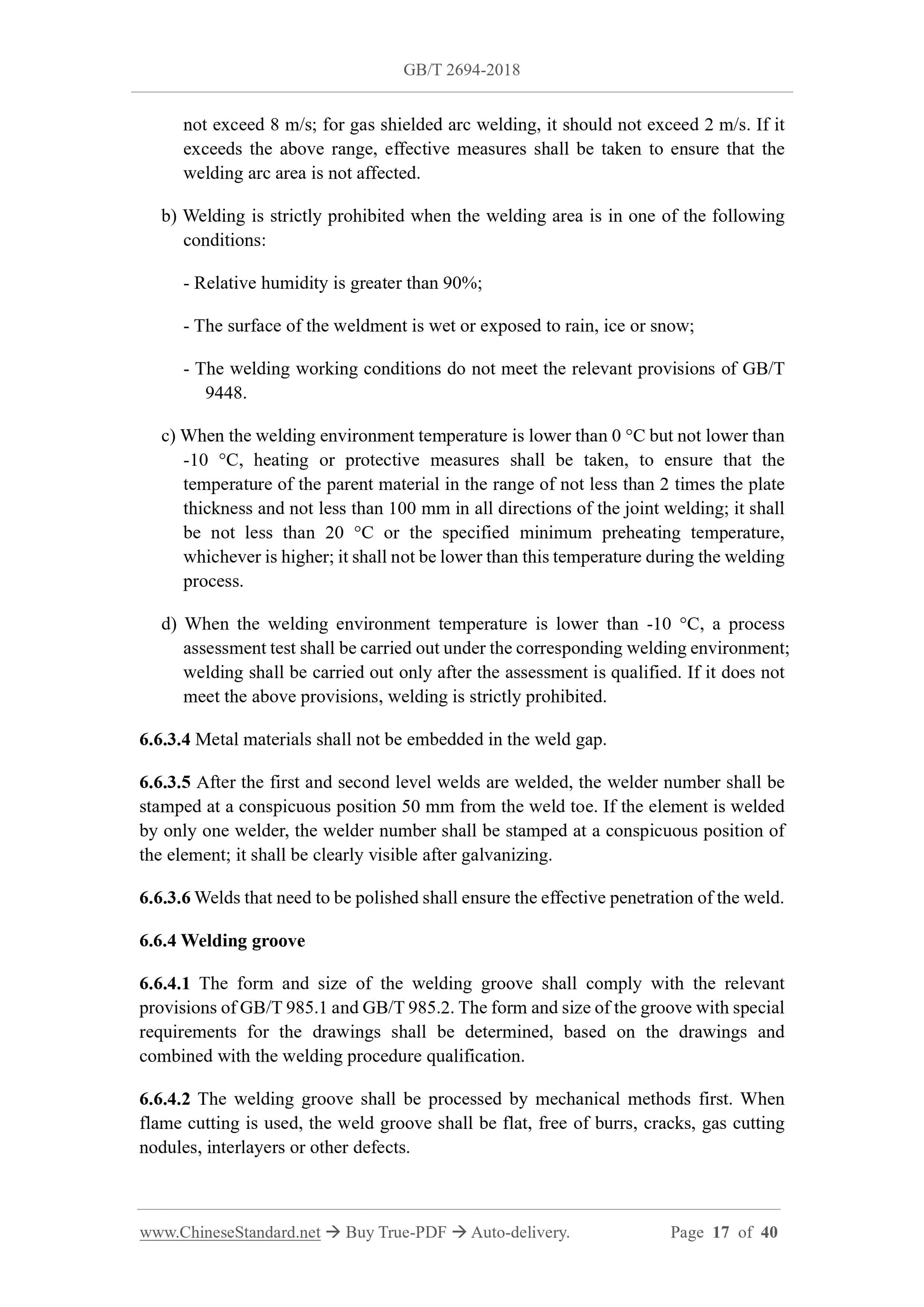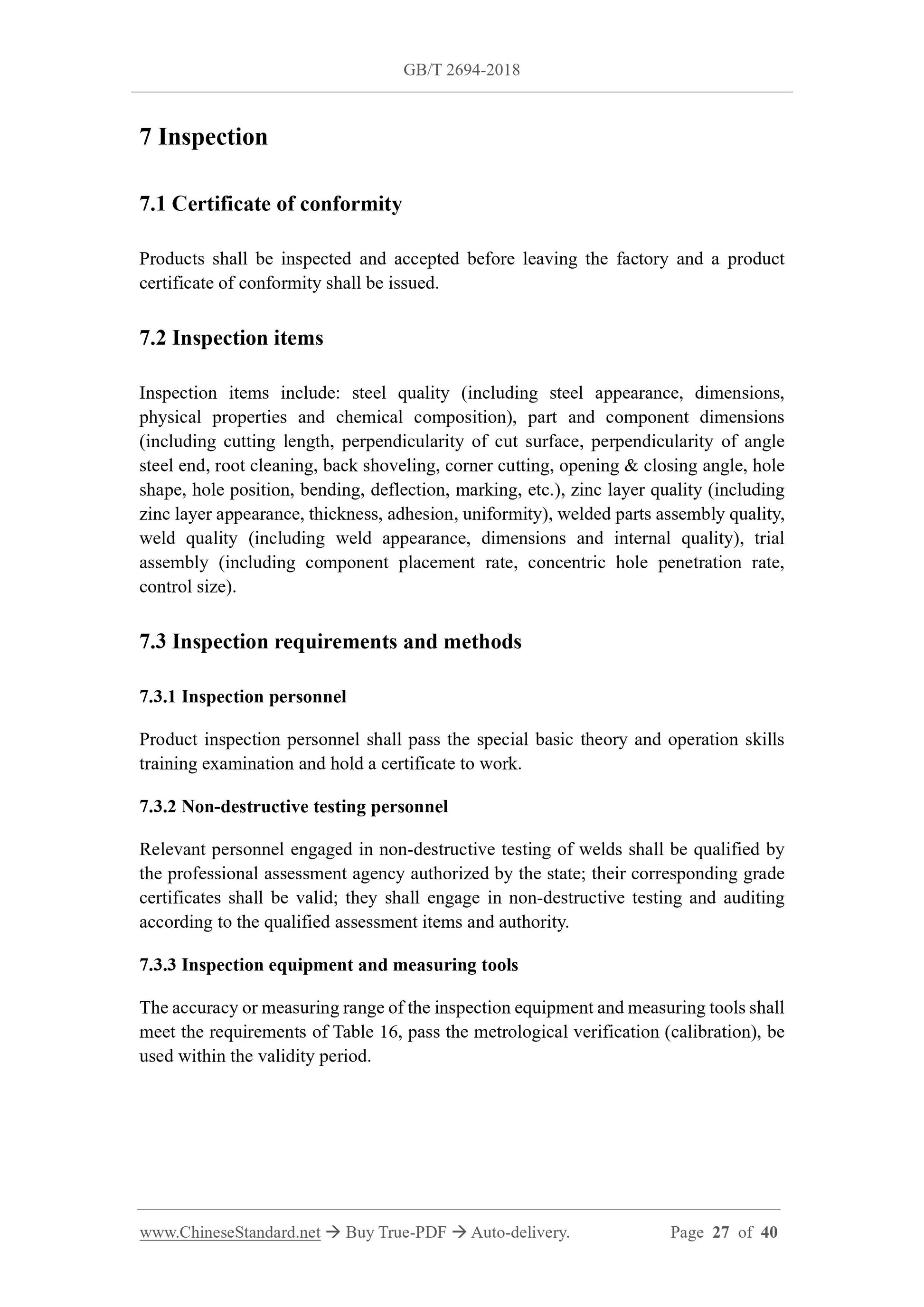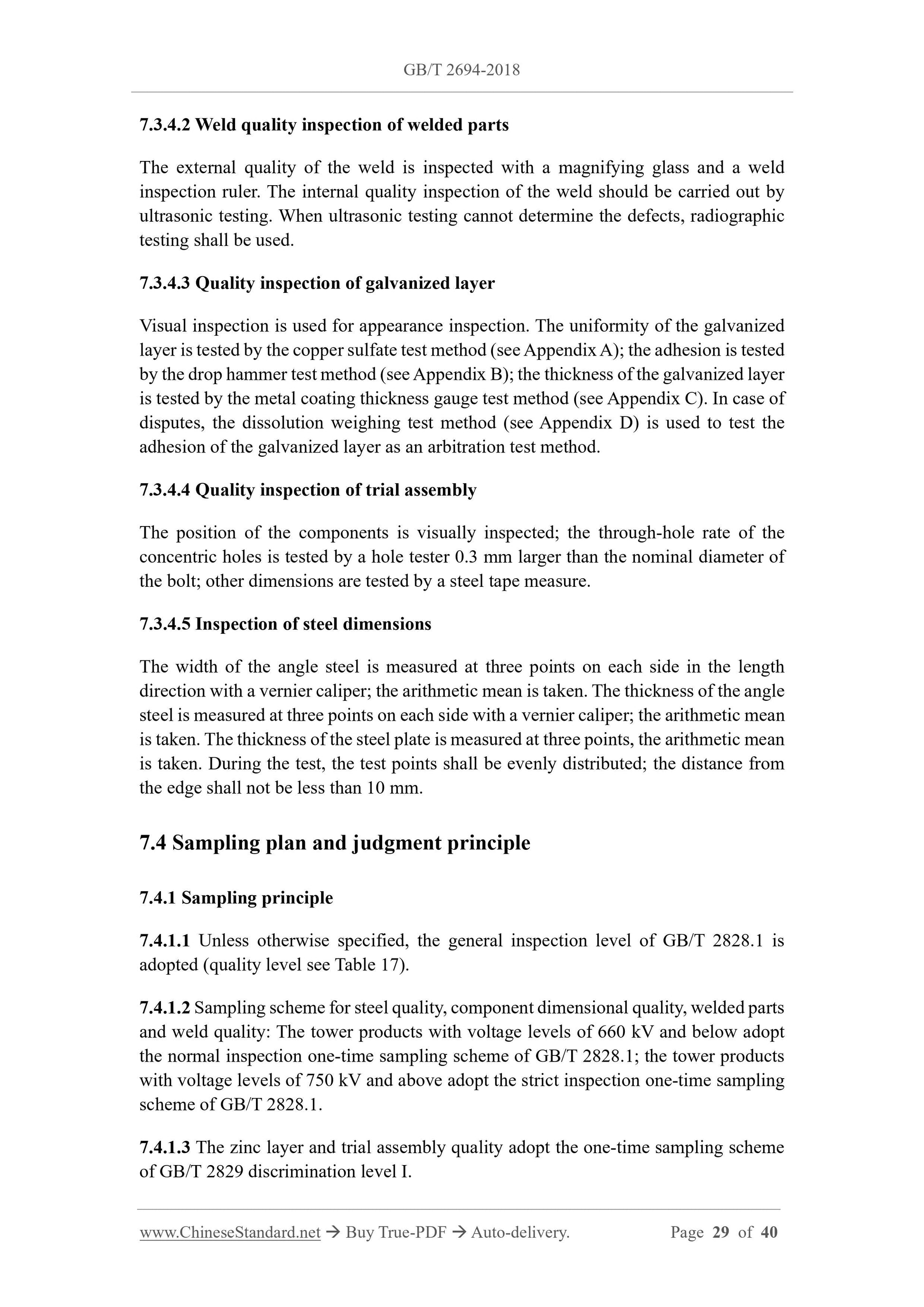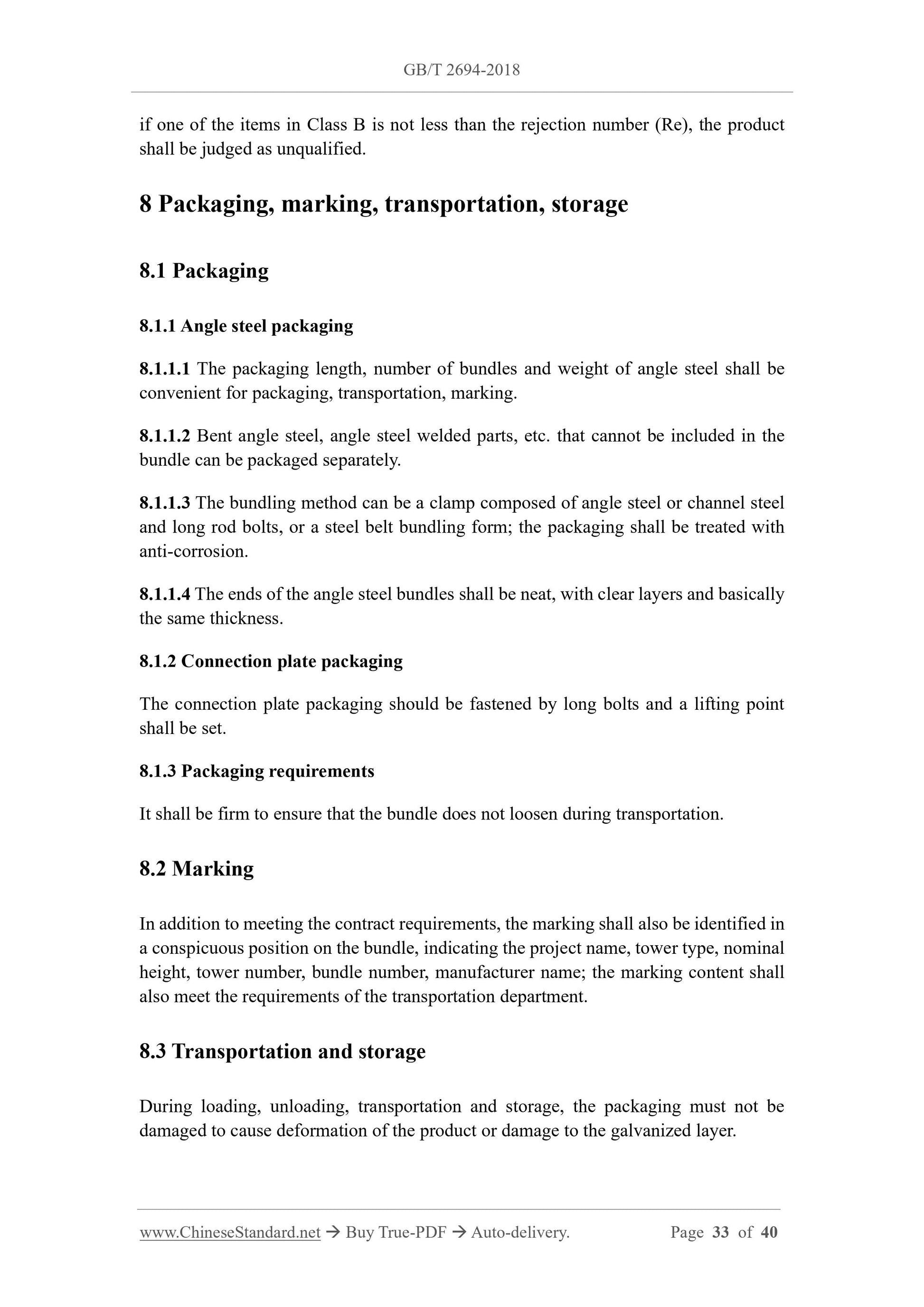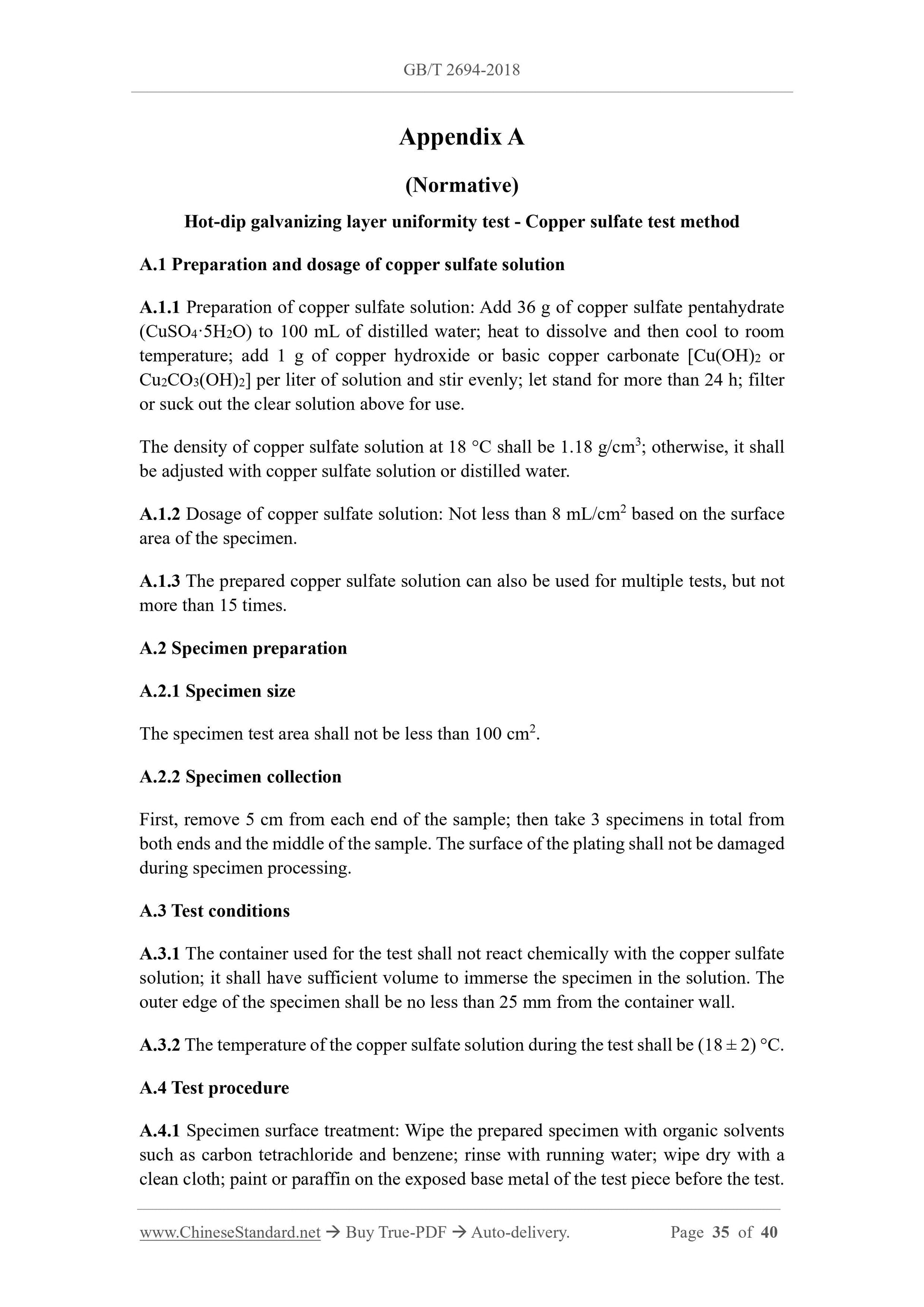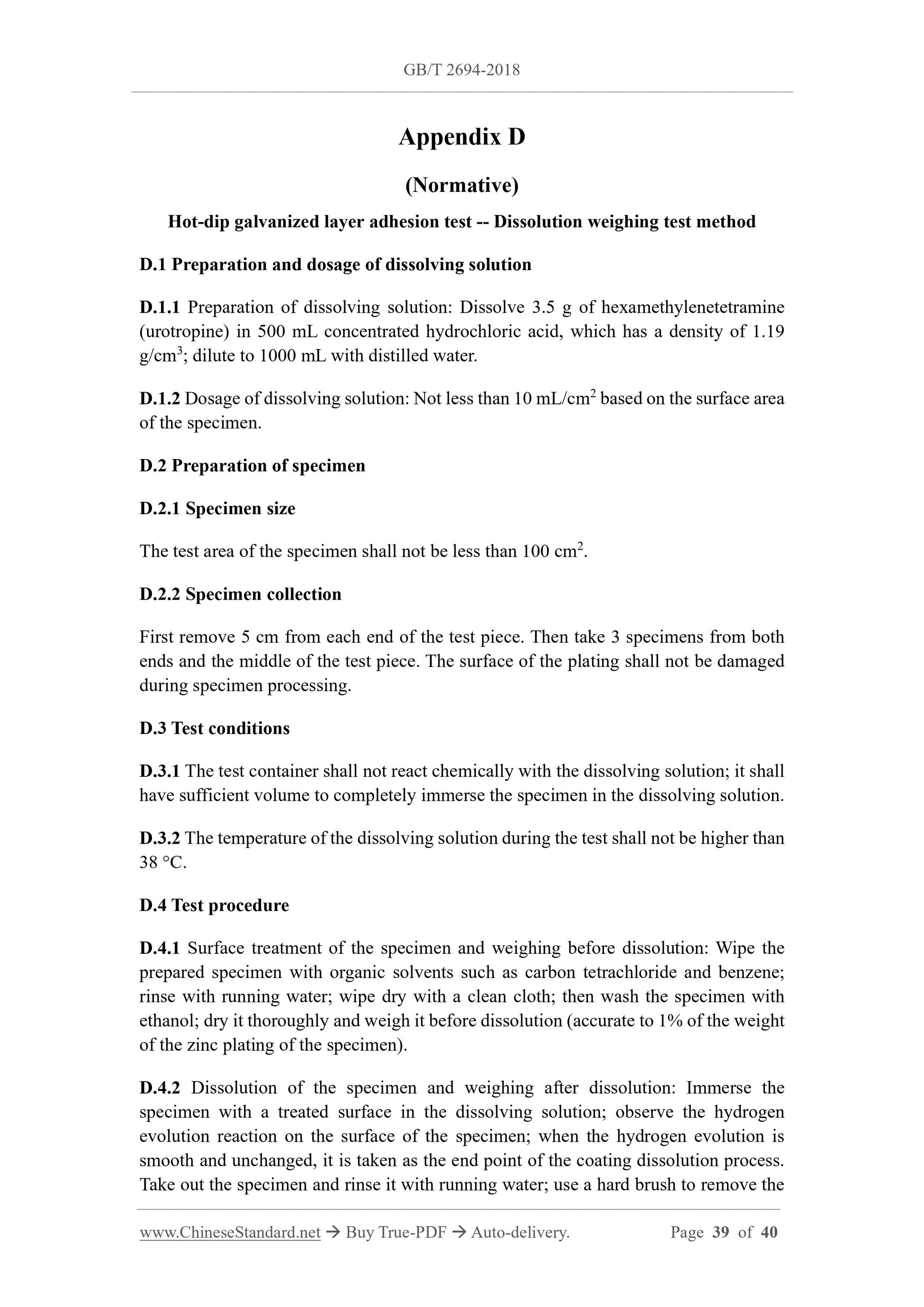1
/
of
12
www.ChineseStandard.us -- Field Test Asia Pte. Ltd.
GB/T 2694-2018 English PDF (GB/T2694-2018)
GB/T 2694-2018 English PDF (GB/T2694-2018)
Regular price
$495.00
Regular price
Sale price
$495.00
Unit price
/
per
Shipping calculated at checkout.
Couldn't load pickup availability
GB/T 2694-2018: Specification of manufacturing for transmission line tower
Delivery: 9 seconds. Download (and Email) true-PDF + Invoice.Get Quotation: Click GB/T 2694-2018 (Self-service in 1-minute)
Newer / historical versions: GB/T 2694-2018
Preview True-PDF
Scope
This standard specifies the materials, technical requirements, inspection, packaging,marking, transportation, storage in the manufacturing process of transmission line
towers (hereinafter referred to as "towers").
This standard applies to the manufacturing of angle steel towers for transmission lines.
It can be used as a reference for the manufacturing of power microwave towers, power
communication towers and similar steel structures.
Basic Data
| Standard ID | GB/T 2694-2018 (GB/T2694-2018) |
| Description (Translated English) | Specification of manufacturing for transmission line tower |
| Sector / Industry | National Standard (Recommended) |
| Classification of Chinese Standard | K47 |
| Classification of International Standard | 29.240.99 |
| Word Count Estimation | 34,326 |
| Date of Issue | 2018-07-13 |
| Date of Implementation | 2019-02-01 |
| Issuing agency(ies) | State Administration for Market Regulation, China National Standardization Administration |
Share
